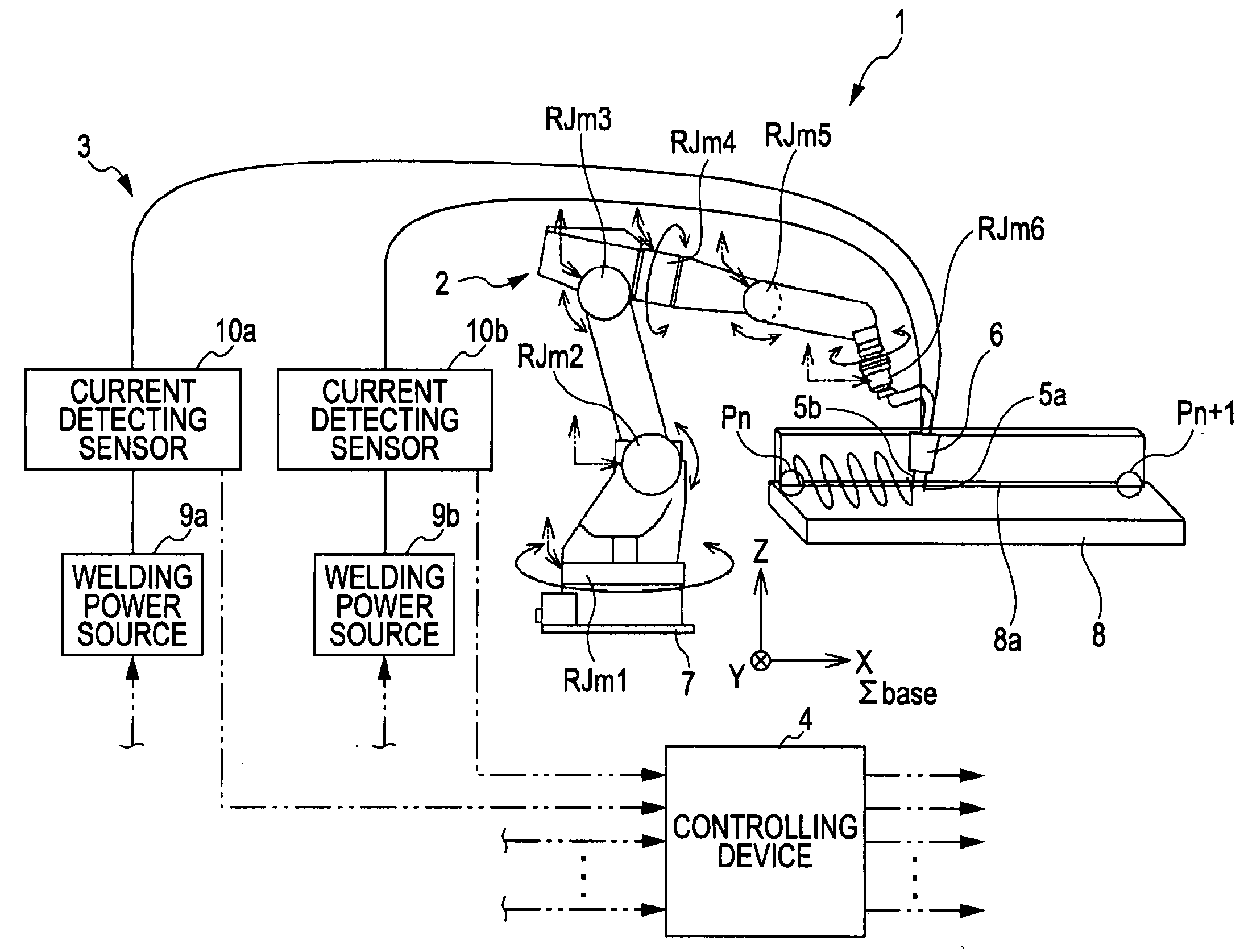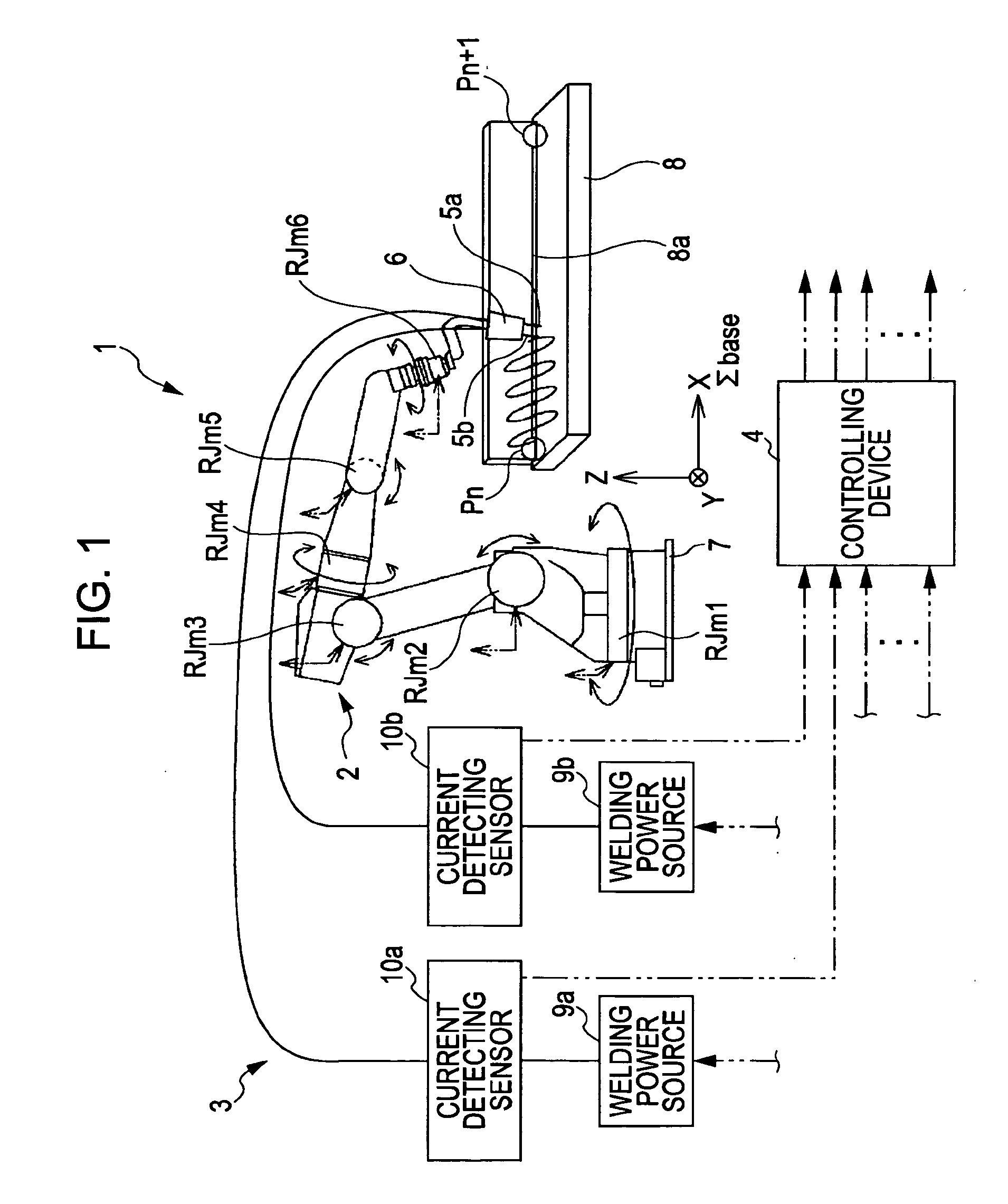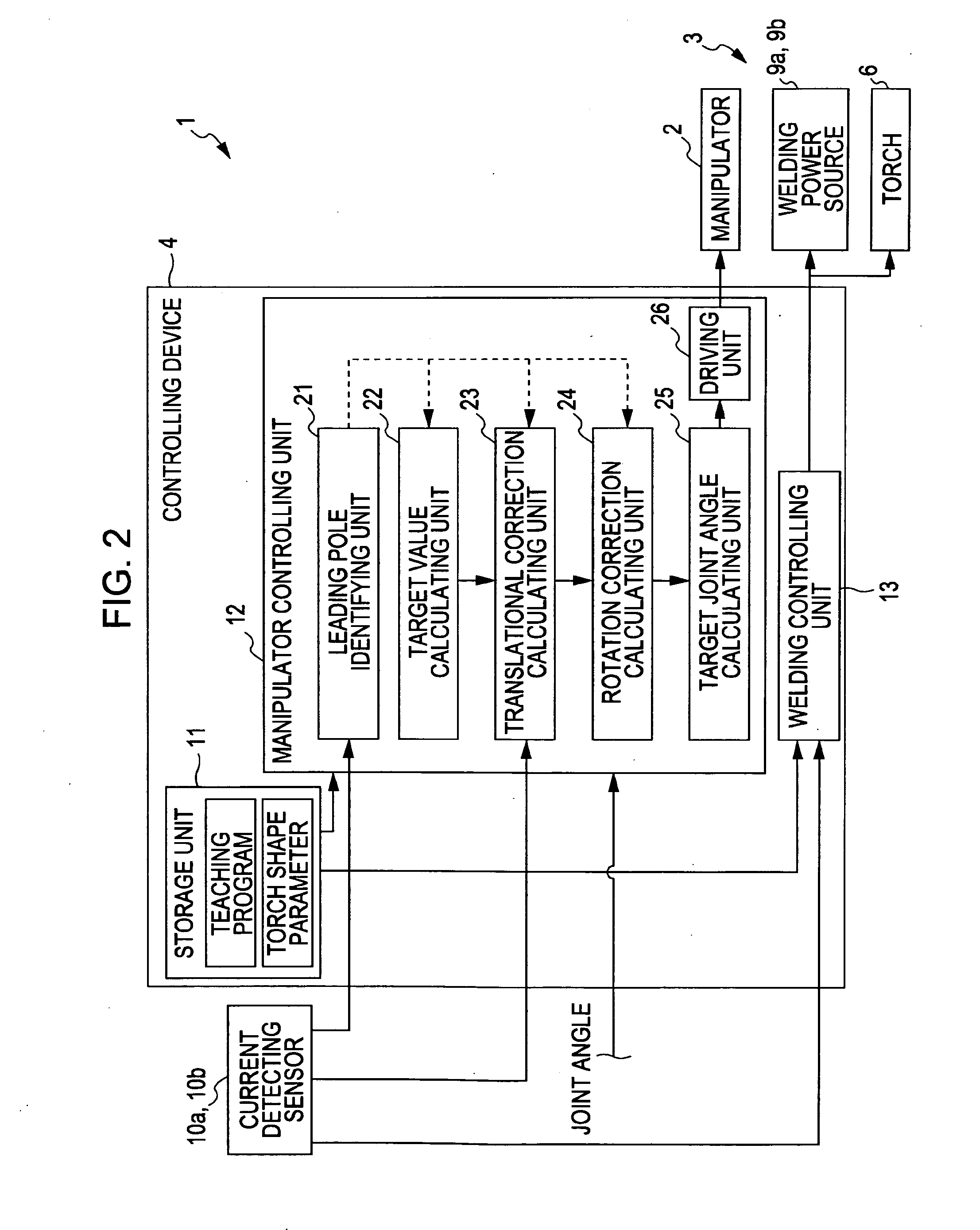Welding robot
a welding robot and robot body technology, applied in the field of welding robots, can solve the problems of ineffectiveness, defective welding, seam tracking, etc., and achieve the effect of high tracking ability and reliably preventing human error
- Summary
- Abstract
- Description
- Claims
- Application Information
AI Technical Summary
Benefits of technology
Problems solved by technology
Method used
Image
Examples
first embodiment (refer to fig.1)
First Embodiment (Refer to FIG. 1)
[0038]A welding robot 1 according to a first embodiment of the present invention shown in FIG. 1 comprises a manipulator 2, a welding unit 3, and a controlling device 4. The welding robot 1 automatically welds a workpiece (weld object) 8 along a weld joint 8a.
[0039]A tandem torch 6 having a pair of arc electrodes (hereafter simply referred to as “electrodes”), formed of wires, are mounted to a flange surface 2a (see FIG. 3) at an end of the manipulator 2. The manipulator 2 changes the position and the orientation of the torch 6 in three-dimensional space. The manipulator 2 has six rotational joints, RJm1, RJm2, RJm3, RJm4, RJm5, and RJm6. The rotational joints RJm1 to RJm6 are linked to each other with links, and the rotational joint RJm1 that is closest to a base end side is mounted to a base 7. The rotation joints RJm1 to RJm6 are provided with respective angle sensors for detecting motor joint angles J (J1, J2, J3, J4, J5, and J6) for rotational...
second embodiment (refer to fig.10)
Second Embodiment (Refer to FIG. 10)
[0080]A welding robot 1 according to a second embodiment of the present invention shown in FIGS. 10 and 11 comprises an optical sensor 100 instead of the current detecting sensors 10a and 10b (see FIGS. 1 and 2). The optical sensor 100 comprises a projector 101 and a light-receiving sensor 102. In the embodiment, the leading electrode is previously known (hereunder, an electrode 5a is the leading electrode).
[0081]Controlling operations (Steps S12-3 to S12-13) of a manipulator 2 executed by a controlling device 4 shown in FIG. 12 are similar to those in the first embodiment in that, after starting welding by moving a torch to a weld start position Pn (Steps S12-1 to S12-2), the following operations are repeated at every path calculation interval Tc, that is, calculation of a target value Plead(t) of the leading electrode 5a, calculation of a primary correction target value Plead(t) using a translational correction amount ΔP(t), calculation of a sec...
PUM
| Property | Measurement | Unit |
|---|---|---|
| positional displacement | aaaaa | aaaaa |
| joint angle | aaaaa | aaaaa |
| rotation | aaaaa | aaaaa |
Abstract
Description
Claims
Application Information
 Login to View More
Login to View More - R&D
- Intellectual Property
- Life Sciences
- Materials
- Tech Scout
- Unparalleled Data Quality
- Higher Quality Content
- 60% Fewer Hallucinations
Browse by: Latest US Patents, China's latest patents, Technical Efficacy Thesaurus, Application Domain, Technology Topic, Popular Technical Reports.
© 2025 PatSnap. All rights reserved.Legal|Privacy policy|Modern Slavery Act Transparency Statement|Sitemap|About US| Contact US: help@patsnap.com



